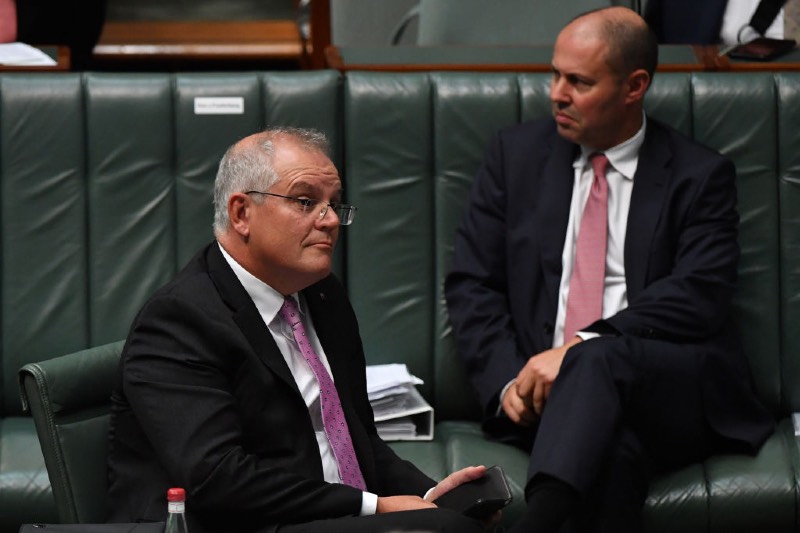Extract from Eureka Street
- Catherine Marshall
- 25 February 2021
The two most incisive statements relating to the allegations of sexual assault currently miring the Liberal party have come from opposite ends of its hierarchy: the junior employee allegedly raped in a defence ministry office two years ago, and the head of government who denies any prior knowledge of her ordeal.

Parliament House is not, after all, ‘the safest building in Australia’, said Brittany Higgins when announcing her intention to ‘proceed with a formal complaint regarding the crime committed against me’ by a fellow Liberal staffer in that apparently-sacrosanct space. And, ‘if any workplace thinks that this [pervasive culture of disrespect] is just confined to the parliament, they’re kidding themselves,’ said Prime Minister Scott Morrison, in a vain attempt to deflect blame from his party.
The first statement shatters the myth that there are safe spaces where women and girls will be protected from the harm that might otherwise be committed against them. Experience and research, too, disprove this hypothesis: in Australia, one in three women has experienced physical and/or sexual violence perpetrated by a man since the age of 15, according to Our Watch. Such violence occurs in any and all of the spaces into which women dare venture: workplaces, schools, places of worship, railways stations, parks, the hallowed halls of parliament and — perhaps most frequently of all — their own homes.
The potential for violence — especially sexual assault — is like air for women, in its most rudimentary sense; it exists all around us, invisible yet omnipresent, hefted with capability. It is an unspoken — often unacknowledged — social compact, an awareness gifted to us as armour when we are young, heightening our senses and cautioning us against danger. But instead of expanding our existence, such forewarning diminishes it; as we move through the world, we mechanically measure and mitigate our movement in relation to men’s propensity for violence. We urge our friends and female relatives to text us when they’re safely home, warn one another against sleazy colleagues and against catching Ubers unless we’re in a trusted person’s company. We hold ourselves responsible for our own safety.
Such learned behaviour circumscribes our already gender-defined boundaries yet further. The fear of rape, as the writer, feminist and social commentator Rebecca Solnit writes so trenchantly in her book Wanderlust: A History of Walking, ‘puts many women in their place — indoors, intimidated, dependent yet again on material barriers and protectors... I was advised to stay indoors at night, to wear baggy clothes, to cover or cut my hair, to try to look like a man, to move someplace more expensive, to take taxis, to buy a car, to move in groups, to get a man to escort me... all asserting it was my responsibility to control my own and men's behaviour rather than society's to ensure my freedom. I realised that many women had been so successfully socialised to know their place that they had chosen more conservative, gregarious lives without realising why.’
Men, by comparison, aren’t socialised to shrink in public the way women are; they occupy the world much the way they do a seat on a bus — expansively, with confidence and a robust sense of entitlement. So natural is this disposition, they are generally unaware of it; since male privilege, like white privilege, is a birthright and a norm, men must deliberately interrogate their one-dimensional perspective of it if they are to fully appreciate both its power and its prejudice. It wouldn’t occur to men, generally, to dress modestly so as to avoid aggressive and unwanted sexual attention, or to let their friends know they’ve arrived home safely after a night out, or to avoid the boss at the office Christmas party. Most men would be surprised to learn of the adrenalin that electrifies the lone woman’s body as they stride behind her in the dark; it is them she fears.
'Our parliament — where at least one woman’s such fear was allegedly realised — is indeed not the only Australian institution fetid with such a "pervasive culture of disrespect"; but it is most certainly the highest-ranked.'
Such insidiousness underpins the second statement, in which Morrison attempts to mitigate the damage this incident has caused his government by claiming such conduct isn’t confined to parliament; unwittingly, he emphasises the magnitude of the problem. Besides the sexual violence suffered by women, a report by the Australian Human Rights Commission found that 39 per cent of women said they’d experienced sexual harassment in the workplace in the past five years. When men experience such harassment or assault — and to be sure it does happen — their experience is treated like news; yet for women it has always been a given.
Indeed, most women and girls live in fear of rape, Solnit writes in Men Explain Things to Me. ‘That’s how rape functions as a powerful means by which the whole female population is held in a subordinate position to the whole male population, even though many men don’t rape, and many women are never victims of rape.’
Our parliament — where at least one woman’s such fear was allegedly realised — is indeed not the only Australian institution fetid with such a ‘pervasive culture of disrespect’; but it is most certainly the highest-ranked. As leader of a population comprising 50.2 per cent women — those citizens whose lives are constrained daily by fear of sexual violence — Morrison would do well to lead from the top and put his own house in order.
 Catherine Marshall is a Sydney-based journalist and travel writer.
Catherine Marshall is a Sydney-based journalist and travel writer.
No comments:
Post a Comment